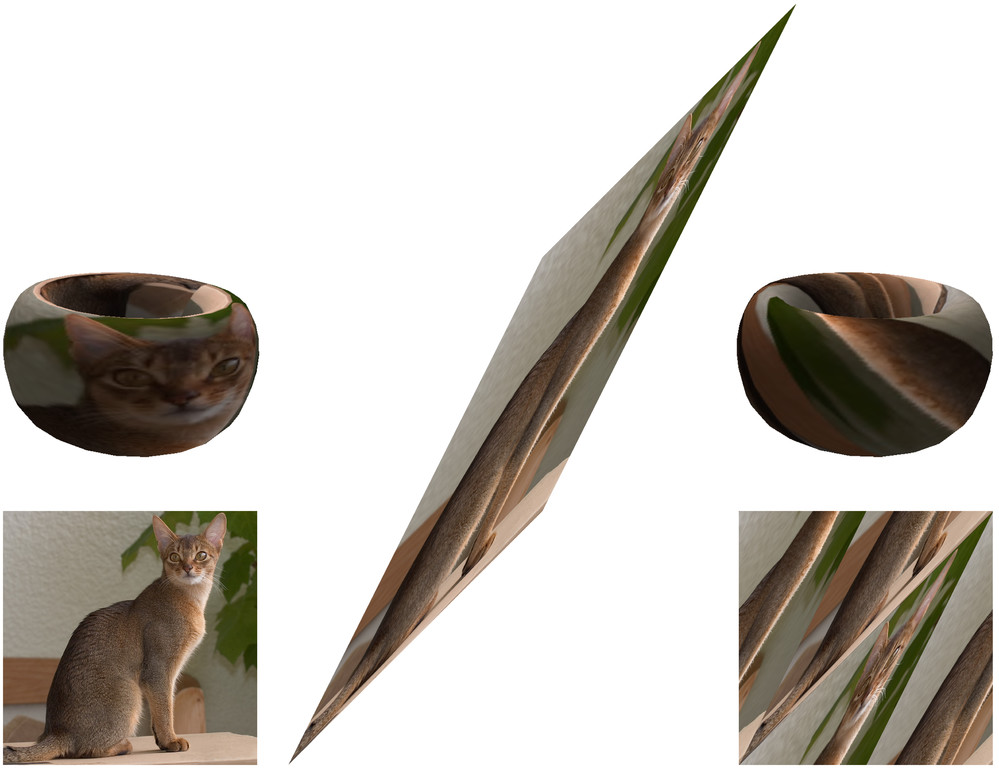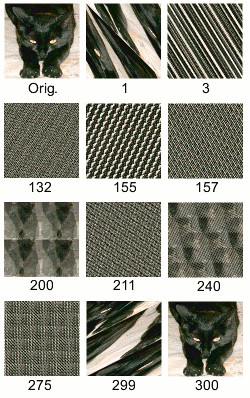

In the 1960s, Soviet mathematician Vladimir Arnold mapped the square image of a cat to a torus, “stretched” (sheared) it as shown on that surface, then sliced the resulting image into pieces and recomposed them into a square.
As the process is repeated, any two points in the image quickly become separated, but, surprisingly, after sufficient repetitions the original image reappears.
A discrete analogue is at right. As the transformation is repeated, the image appears increasingly random or disordered, but the underlying cat can be glimpsed making occasional appearances, sometimes as a ghostly suggestion, sometimes in multiple smaller images, and occasionally (yowling, one imagines) even upside down.
It reappears again, unhurt, at the 300th iteration.
It’s called Arnold’s cat map. You can try it yourself here.
